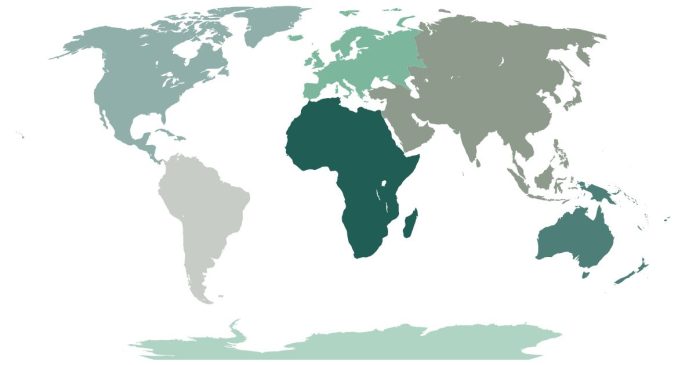The diversity of life on Earth is organized into distinct biomes, which are large regions characterized by specific climates, vegetation, and wildlife. Biomes include tundras, deserts, grasslands, forests, and aquatic ecosystems, among others. The number and variety of biomes found on each continent depend largely on its size, climate zones, and geographical features.
When it comes to the continent with the least number of biomes, Antarctica stands out. This icy landmass at the southernmost tip of the Earth is unique because its extreme climate and geographical isolation support very limited biome diversity. In this article, we’ll explore why Antarctica has the fewest biomes and how its environment shapes the limited ecosystems found there.
Antarctica: A Land Dominated by Ice
Antarctica is the coldest, driest, and windiest continent on Earth. With nearly 98% of its surface covered by ice, it is often referred to as a polar desert. Despite its vast size (about 14 million square kilometers), Antarctica’s harsh environment severely limits the types of biomes and ecosystems that can exist.
Biomes in Antarctica
Antarctica primarily consists of the polar ice biome, with minor representations of other biomes:
- Polar Ice Biome:
The majority of Antarctica falls within the polar ice biome, characterized by year-round subzero temperatures, thick ice sheets, and minimal precipitation (technically qualifying it as a desert). The polar ice biome is largely devoid of vegetation, except for algae, mosses, and lichens that can survive on exposed rock or ice. - Tundra-Like Areas:
Some parts of the Antarctic Peninsula and coastal regions experience slightly milder temperatures during the summer months. These areas have patches of bare ground where mosses, lichens, and small invertebrates like nematodes and tardigrades can thrive. These regions resemble a tundra biome but are extremely limited in size and biodiversity compared to tundra ecosystems in the Arctic. - Marine Biome:
While not part of the terrestrial landscape, the surrounding Southern Ocean is home to a rich marine biome that supports penguins, seals, and whales. This biome is fueled by krill and phytoplankton, which form the base of the marine food web. However, the marine biome is separate from Antarctica’s terrestrial environment.
Why Does Antarctica Have Few Biomes?
Several factors contribute to the limited number of biomes on Antarctica:
- Extreme Climate:
Antarctica’s extreme cold and long periods of darkness during the winter make it inhospitable for most life forms. Average temperatures range from −10°C (14°F) on the coast to −60°C (−76°F) in the interior. - Lack of Soil:
The continent’s ice coverage prevents the formation of fertile soil, which is essential for supporting terrestrial plants and complex ecosystems. Even in ice-free areas, the rocky ground lacks the nutrients needed for most vegetation. - Low Precipitation:
Antarctica receives very little precipitation, making it one of the driest places on Earth. Without sufficient water, plant and animal life struggles to establish and thrive. - Isolation:
The continent’s geographic isolation limits the migration of species to Antarctica, further reducing its biodiversity.
Comparison to Other Continents
In contrast to Antarctica, other continents host a wide variety of biomes due to their larger size, diverse climates, and geographical features. For example:
- Africa has deserts (e.g., Sahara), savannas, rainforests, and Mediterranean climates.
- Asia boasts a vast range of biomes, from Arctic tundra in Siberia to tropical rainforests in Southeast Asia.
- North America and South America have diverse ecosystems, including temperate forests, grasslands, deserts, and tropical rainforests.
- Australia is home to deserts, savannas, tropical rainforests, and unique ecosystems such as eucalyptus forests.
- Europe, despite being smaller, has several biomes, including temperate forests, grasslands, and tundra in the far north.
Antarctica’s lack of biome diversity stands in stark contrast to these continents, which are shaped by a variety of climates and landscapes.


